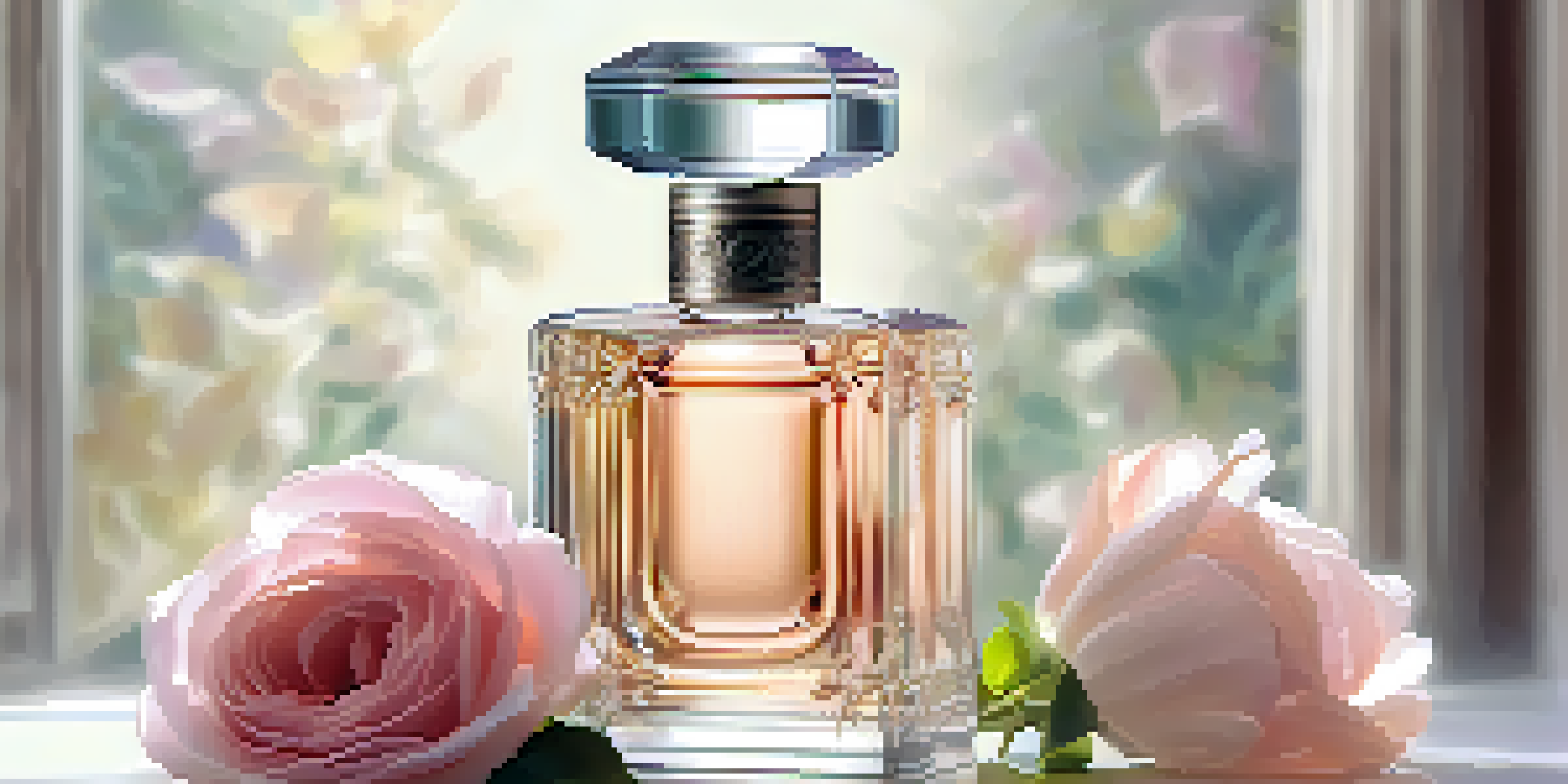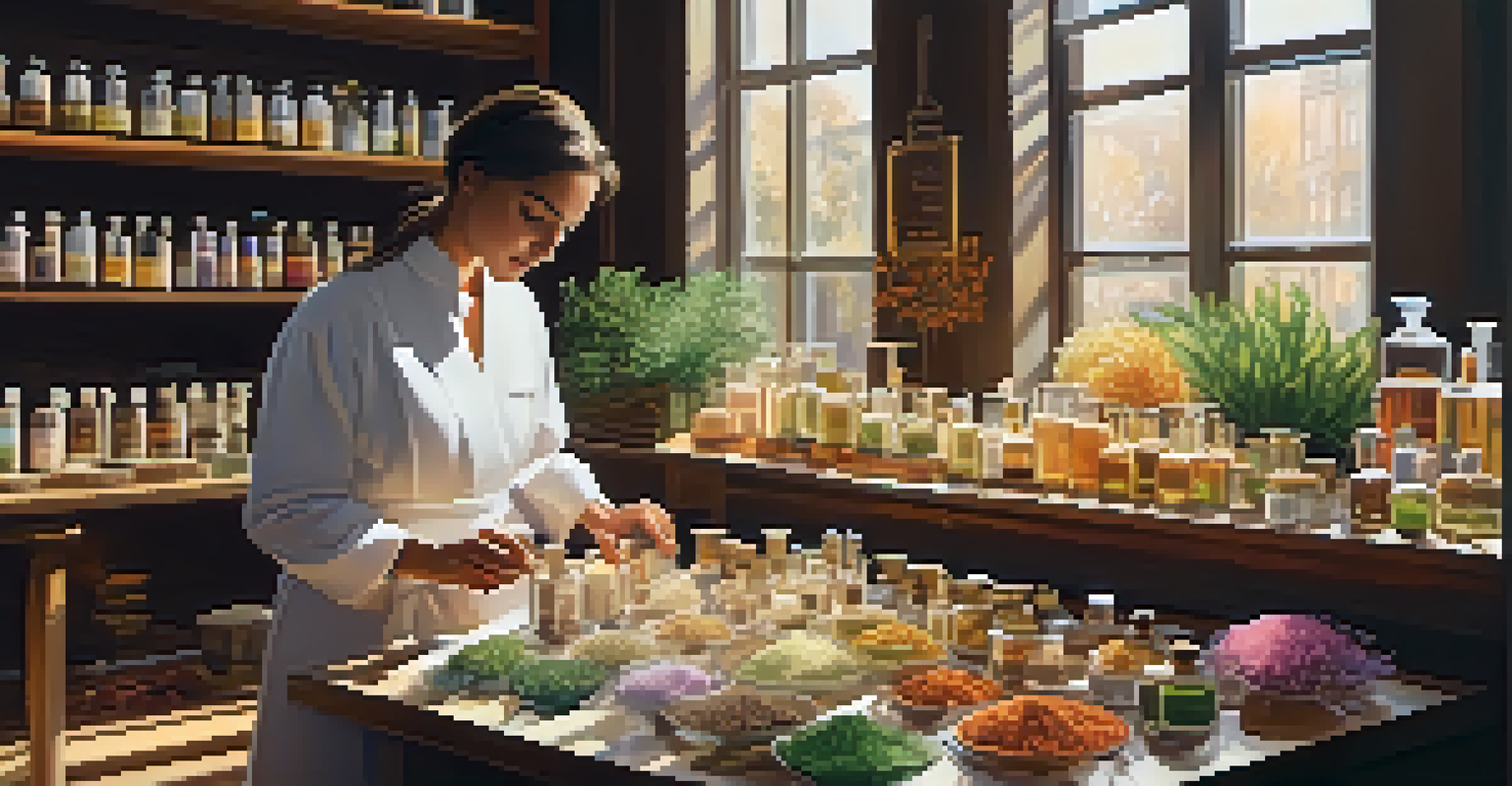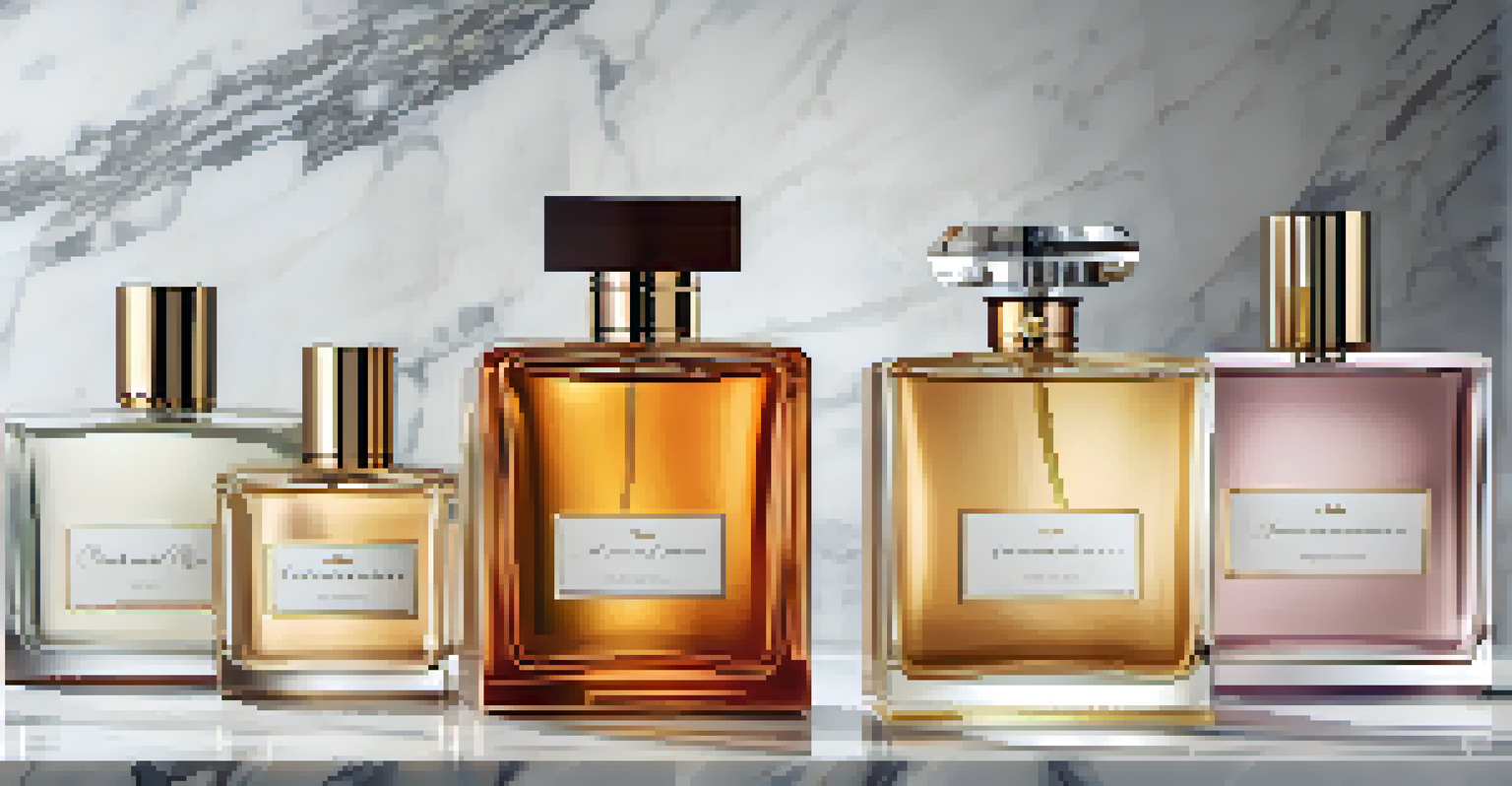The Evolution of Luxury Fragrances in High-End Cosmetics

The Historical Roots of Luxury Fragrances
Luxury fragrances have a rich history, dating back to ancient civilizations. The Egyptians, for instance, were among the first to use perfumes in religious ceremonies and personal grooming. They crafted scents from natural ingredients like flowers, spices, and resins, setting the stage for modern fragrance creation.
Perfume is the most intense form of memory.
As time progressed, the art of perfumery spread through cultures, notably flourishing in the Middle Ages with the introduction of distillation techniques. This innovation allowed perfumers to extract and blend scents more efficiently, paving the way for the luxurious fragrances we know today. It’s fascinating to think how these early scents influenced our contemporary approach to luxury.
By the time the Renaissance rolled around, scents became a symbol of wealth and status, often reserved for the elite. The establishment of perfumeries in France during this period marked the beginning of a luxurious fragrance industry that would evolve and expand into the high-end cosmetics market.
The Rise of Iconic Fragrance Houses
As we ventured into the 20th century, iconic fragrance houses emerged, each bringing unique artistry to the world of scent. Brands like Chanel and Dior revolutionized the industry with their signature fragrances, establishing a link between luxury cosmetics and personal identity. For example, Chanel No. 5 became an emblem of sophistication and elegance, forever changing how we perceive perfume.

These fragrance houses not only focused on creating captivating scents but also on crafting an entire lifestyle around them. From luxurious packaging to high-profile advertising campaigns, they elevated fragrances to an art form, making them highly coveted status symbols. This branding strategy helped define the concept of luxury in cosmetics.
Luxury Fragrances: A Rich History
Luxury fragrances have evolved from ancient rituals to modern luxury, reflecting culture and artistry throughout history.
The blend of fashion and fragrance also played a significant role in this evolution. Designers began to see perfumes as an extension of their brand, leading to collaborations that further blurred the lines between fashion and fragrance, creating a holistic luxury experience for consumers.
The Role of Celebrity Influence
In the late 20th century, celebrity culture began to intertwine with the world of fragrances, marking a pivotal shift. Celebrities started launching their own fragrance lines, leveraging their star power to create highly successful products. Think of how Jennifer Lopez’s Glow became a blockbuster hit, showing that personal branding could translate into the fragrance market.
Fragrance is the voice of inanimate things.
This trend opened doors for consumers to connect with their favorite stars on a more personal level. Wearing a celebrity fragrance became a way for fans to feel closer to their idols, adding a layer of emotional investment to the product. It’s a fascinating example of how marketing and consumer behavior evolved hand in hand.
Moreover, this phenomenon led to an increased focus on accessibility within luxury. While traditional high-end fragrances often catered to an elite clientele, celebrity fragrances reached a broader audience, making luxury scents more attainable while still maintaining an air of exclusivity.
Sustainability in Luxury Fragrance Production
In recent years, sustainability has become a crucial consideration in the production of luxury fragrances. Consumers are now more conscious of the environmental impact of their purchases, prompting brands to adopt eco-friendly practices. This shift has led to the use of sustainably sourced ingredients and environmentally friendly packaging.
Luxury fragrance houses are also investing in transparency, allowing consumers to understand the origins of their scents. This desire for authenticity reflects a broader trend in high-end cosmetics, where ethical considerations are becoming a key selling point. It's refreshing to see how brands are evolving to meet the expectations of modern consumers.
Celebrity Influence on Fragrance
The rise of celebrity fragrances has transformed the market, making luxury scents more accessible while deepening emotional connections between consumers and stars.
Additionally, the incorporation of natural ingredients and artisanal techniques is gaining popularity. This not only appeals to eco-conscious buyers but also enhances the uniqueness of each fragrance, reinforcing the idea that luxury can coexist with responsibility. It's an exciting time for the industry, as new standards are being set for what luxury truly means.
The Impact of Technology on Fragrance Creation
Technology has significantly transformed the fragrance industry, introducing innovative ways to create and market scents. Advances in chemistry have allowed perfumers to synthesize new ingredients, expanding the olfactory palette available for luxury fragrances. This scientific approach has led to the development of unique and unexpected scent combinations.
Moreover, digital marketing strategies have changed how luxury fragrances are promoted. Brands can now reach a global audience through social media platforms, creating buzz and excitement around new launches. This shift has also given rise to influencer marketing, where social media personalities can sway consumer preferences with their endorsements.
Additionally, virtual reality and augmented reality experiences are beginning to play a role in how consumers interact with fragrances. Imagine being able to ‘smell’ a fragrance through an immersive online experience before making a purchase. This integration of technology offers a fresh take on luxury, making it more interactive and engaging.
The Future of Luxury Fragrances
Looking ahead, the future of luxury fragrances is poised to be both innovative and inclusive. As consumers continue to seek personalized experiences, brands are increasingly offering customizable fragrances, allowing individuals to craft their unique scent profiles. This trend reflects a growing desire for authenticity and personal expression in the world of luxury.
Furthermore, we can expect a continued focus on inclusivity, with brands expanding their fragrance lines to cater to diverse preferences and identities. This shift not only respects cultural differences but also fosters a deeper connection between brands and consumers, creating a more vibrant fragrance community.
Sustainability in Fragrance Production
Today's luxury fragrance brands are increasingly adopting sustainable practices, reflecting consumers' demand for eco-friendly products and transparency.
Lastly, as sustainability and technological advancements evolve, the luxury fragrance market will likely see even more creative approaches to scent creation and marketing. The combination of tradition and innovation will keep the industry dynamic, ensuring that luxury fragrances remain at the forefront of high-end cosmetics.
Conclusion: The Enduring Allure of Luxury Fragrances
The evolution of luxury fragrances in high-end cosmetics tells a fascinating story of culture, artistry, and innovation. From ancient origins to modern-day trends, fragrances have maintained their status as symbols of luxury and personal expression. Each bottle holds not just a scent but a narrative that resonates with consumers around the globe.
As we embrace new trends and technologies, the essence of luxury fragrances will continue to evolve. By blending tradition with contemporary values, brands can create experiences that honor the past while looking towards the future. It’s this delicate balance that keeps the allure of luxury fragrances alive.

In a world where personal identity and self-expression are paramount, luxury fragrances remain a powerful tool. They allow individuals to tell their stories, evoke memories, and make bold statements. As the industry progresses, the journey of luxury fragrances will undoubtedly continue to captivate and inspire.